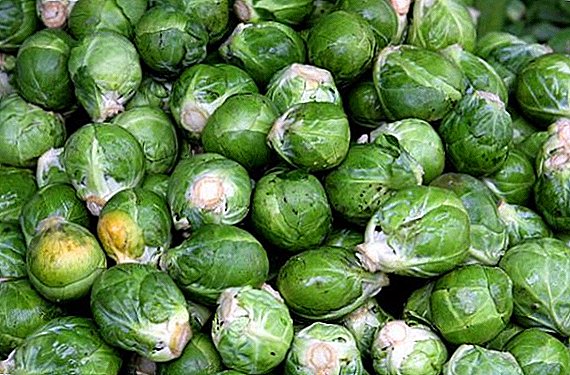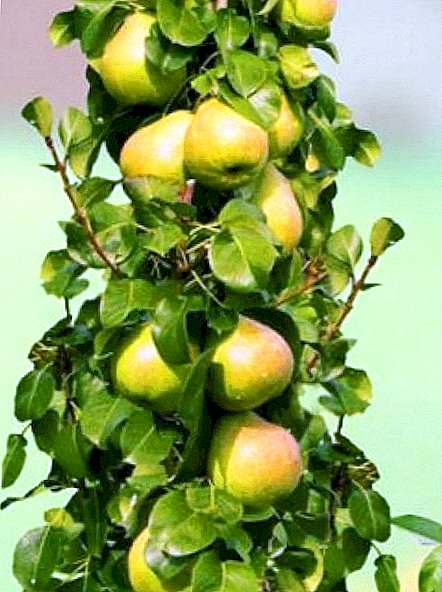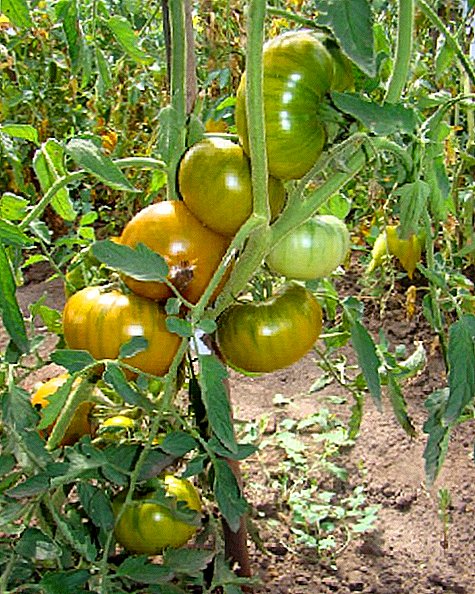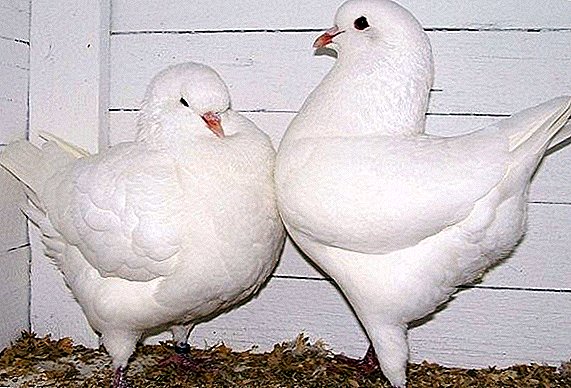
Orchid - a plant that is distinguished by its whimsical and features in the care. One of the problems that arise during the cultivation of phalaenopsis and which causes a lot of trouble for the grower is the attack of the midges. The article will describe the causes of the appearance of small harmful insects, as well as various ways to combat them and methods of prevention.
Pests: description and appearance
Moreover, these are not only small flying flies, but also larvae, which are distinguished by a high level of resistance to the means of processing and the same high reproduction ability.
How to recognize the attackers? These insects can have two types of coloring: white and black. The main features of pests are:
- oblong body;
- striped body colors;
- the presence of two wings.
Usually in length the midges do not reach more than five millimeters.
What does a startled flower look like?
Signs of attack of midges may be different. All parts of Phalaenopsis, without exception, can be attacked. So, the external signs of the presence of pests on the flower are as follows:
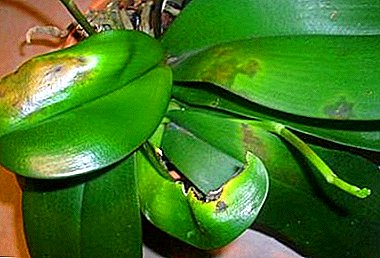 fine brown pigmentation on the leaf plates;
fine brown pigmentation on the leaf plates;- in the same place white bloom may appear with the smallest pores;
- leaves partially turn white, and black dots form on this whitened background;
- in rare cases, the entire surface of the sheet turns white;
- on buds there is a large number of black and white midges;
- insects can also be seen in contaminated soil.
Insect species
Mushroom mosquitoes
 The second name - sciarides. An excellent condition for the development of these insects is a cool, damp place.. This usually occurs in the fall or spring. Fungal mosquitoes are easy to notice, as they attack the orchid in whole flocks. In length sciarides reach four millimeters. Their shade is black, less often - dark brown, there is a pair of wings.
The second name - sciarides. An excellent condition for the development of these insects is a cool, damp place.. This usually occurs in the fall or spring. Fungal mosquitoes are easy to notice, as they attack the orchid in whole flocks. In length sciarides reach four millimeters. Their shade is black, less often - dark brown, there is a pair of wings.
Fungal mosquitoes themselves are not particularly dangerous for phalaenopsis. However, if their larvae fall into the soil, they will literally eat up the root system, and then it will not be possible to save the house beauty.
White fly
 These pests are very tiny - their sizes range from one to two millimeters. However, do not underestimate these black flies. Whiteflies are often located on the back of the leaf plates., as well as the entire length of the stem.
These pests are very tiny - their sizes range from one to two millimeters. However, do not underestimate these black flies. Whiteflies are often located on the back of the leaf plates., as well as the entire length of the stem.
Another sign of the attack of these insects are yellow streaks across the green surface of the plant. The infected plant dies very quickly: the leaves lose their shape, dry out and eventually disappear.
We offer to see the informative video about whitefly:
Drosophila
 Another name - fruit midges. Description of appearance: the body is yellow, two wings and the most important difference is the presence of red eyes. The danger of fruit flies lies in their high fertility.. One midge may set aside up to half a thousand larvae.
Another name - fruit midges. Description of appearance: the body is yellow, two wings and the most important difference is the presence of red eyes. The danger of fruit flies lies in their high fertility.. One midge may set aside up to half a thousand larvae.
You can see red-eyed pests on top of the ground. These midges appear there because of the very frequent and abundant moisture of the substrate. Their "dwelling" on the soil leads to its rotting.
Thrips
 You can recognize them by a long striped body.. The wings are there, but they are almost imperceptible, because they are tightly pressed to the body. May occur in the substrate, but in rare cases. The main place of "residence" of thrips is the leaves, the sap of which the pests feed on.
You can recognize them by a long striped body.. The wings are there, but they are almost imperceptible, because they are tightly pressed to the body. May occur in the substrate, but in rare cases. The main place of "residence" of thrips is the leaves, the sap of which the pests feed on.
You can spot such black flies by small brown dots, and sometimes by silver film on orchids. The easiest way to do this is at night, as during the daytime they hide in the ground. Thrips first destroy the leaves, drying them.
We offer for viewing informative video about thrips:
Are they dangerous?
Each of these insects is a danger to the orchid. The difference lies only in the speed of the destructive impact. Some species of midges leave no chance of saving the plant., they destroy the orchid literally before our eyes.
Causes of
Why did small pests start in a plant pot? The very first reason for the development of pests is soil mixture. Initially in the ground can be devastating insects, which the florist may not even guess. Therefore, the acquired substrate is better to put in a freezer for a day or in a microwave for a few minutes. Thus the soil will be cleared of parasites.
The next reason why the midges appeared was the purchase of a new plant. As soon as a new orchid appears in the collection, it should be sent to the monthly quarantineto trace the presence of diseases and pests.
The following factors also contribute to the proliferation of midges on a plant:
 wrong watering mode - water is either too much or vice versa, it is not enough (ideally, the soil should stand dry for two or three days, and only then it should be watered again);
wrong watering mode - water is either too much or vice versa, it is not enough (ideally, the soil should stand dry for two or three days, and only then it should be watered again);- poor soil compositionwhich does not let air through, as well as the presence of decorative moss on the surface, which also does not allow air to circulate;
- unsuitable fertilizers (usually folk recipes of top dressings usually do not approach).
Next, an informative video about the causes of the appearance of black flies on the orchid:
Step-by-step instruction
In order to correctly choose the method of extermination of pests, it is necessary to determine their variety. However, there are general rules for the control of midges. Instructions on what to do if black flies appear:
- Isolate the flowerpot with the affected flower for at least thirty days.
- Wash off the midges with a gentle stream of warm water, or you can wipe the entire surface of the flower with a damp cloth. Such manipulation will help get rid of most pests.
- Remove all infected orchid patches. Do not forget to treat the cut sites with charcoal or ash.
Now we will describe the methods of combating folk, chemical and biological agents for each type of insect.
Attention! Experienced growers recommend resorting to chemicals only in extreme cases.
White pest control
What to do if white pests start on orchids, and how to get rid of them with the help of folk, chemical and biological means?
Folk remedies
How to remove white pests from orchids with the help of folk remedies?
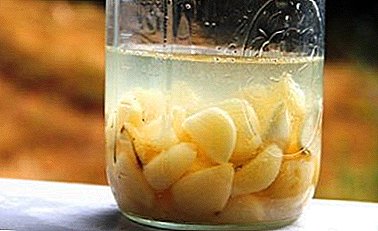 Soap-based solution. Dissolve 20 grams of liquid soap in 200 ml of pure water (try to choose a soap with the most natural composition possible).
Soap-based solution. Dissolve 20 grams of liquid soap in 200 ml of pure water (try to choose a soap with the most natural composition possible).- Garlic tincture. Chop a medium-sized head of garlic and add boiling water. (You can also put one clove of garlic directly on the soil.)
These means need to wipe the entire surface of the flower for five to seven days. Then pause for several days and repeat the course two or three times. 30 days after the disappearance of all the attackers, the plant can be treated with the listed folk remedies for the prevention of new infections.
Chemical
Such means as "Aktellik", "Aktar", "Basudin", "Fury", "Fitoverm" will help well. It is necessary to sprinkle the affected orchid every five days. Such treatments need to be carried out from three to five. In some preparations, the instructions indicate that it is necessary to process three times in a row with an interval of ten days. Therefore, you need to carefully study the instructions of each drug before use.
Biological
You can use a vacuum cleaner. To scare away all the midges, and when they soar over phalaenopsis, collect all of them with a vacuum cleaner. So you can get rid of 60% of all pests. And if you do this manipulation several times, then it is possible to completely destroy all insects.
How to get rid of black?
How to get rid of black pests at home?
Folk remedies
How to get rid of pests in flower pots with the help of folk remedies?
- Oil solution. In 500 ml of water pour 40 ml of olive or grape oil.
- Sprinkle the soil with wood ash.. This will help not only reduce the acidity of the soil, but also nourish it.
Chemical
How to handle blackflies? To combat black insects, you can use insecticidal preparations. For example, "Raptor", "Dichlorvos", "Raid".
It is very important to process not only the infected plant itself, but also the surface on which it is located.
We offer to see an informative video about the chemical method of fighting blackflies on an orchid:
Biological
 You can hang the adhesive tape, which will fly most midges. Another effective method of struggle is hunger. For this you need to remove from the premises all the remnants of food, cleaning, as well as rotten vegetables and fruits.
You can hang the adhesive tape, which will fly most midges. Another effective method of struggle is hunger. For this you need to remove from the premises all the remnants of food, cleaning, as well as rotten vegetables and fruits.
Chemical and folk remedies are recommended not only orchid, but also the soil in which it grows.
It is important to remember that any remedy leaves deposits on the plant. Therefore, its surface must be periodically cleaned to allow the orchid to breathe.
Prevention of further infections
To protect your home pet from subsequent attacks of pests in the form of midges, florist must adhere to the following rules:
- Properly moisten the soil. The soil should stand dry before the next watering for two to three days.
- Try to maintain the optimum level of humidity of the air and the substrate.
- Place a citrus crust or a sprig of lavender next to the pot. These items are perfectly deterred by malicious insects.
- Do not store food residues in the room, dispose of accumulated debris in a timely manner.
- Any substrate, even bought in a specialty store, process in the freezer or microwave.
- Follow phalaenopsis hygiene: arrange a shower for her once a week and wipe the leaves from dust with a damp cloth.
- Open windows protect the mosquito net. So you can limit the invasion of insects, at least from the window.
Conclusion
Any plant can not grow without any problems. Almost all of them can be solved. However, this can be done only with the right approach: you need to act in a timely and systematic manner, and also try not to overdo it with treatment. Because sometimes excessive care can be disastrous.


 fine brown pigmentation on the leaf plates;
fine brown pigmentation on the leaf plates; wrong watering mode - water is either too much or vice versa, it is not enough (ideally, the soil should stand dry for two or three days, and only then it should be watered again);
wrong watering mode - water is either too much or vice versa, it is not enough (ideally, the soil should stand dry for two or three days, and only then it should be watered again); Soap-based solution. Dissolve 20 grams of liquid soap in 200 ml of pure water (try to choose a soap with the most natural composition possible).
Soap-based solution. Dissolve 20 grams of liquid soap in 200 ml of pure water (try to choose a soap with the most natural composition possible).